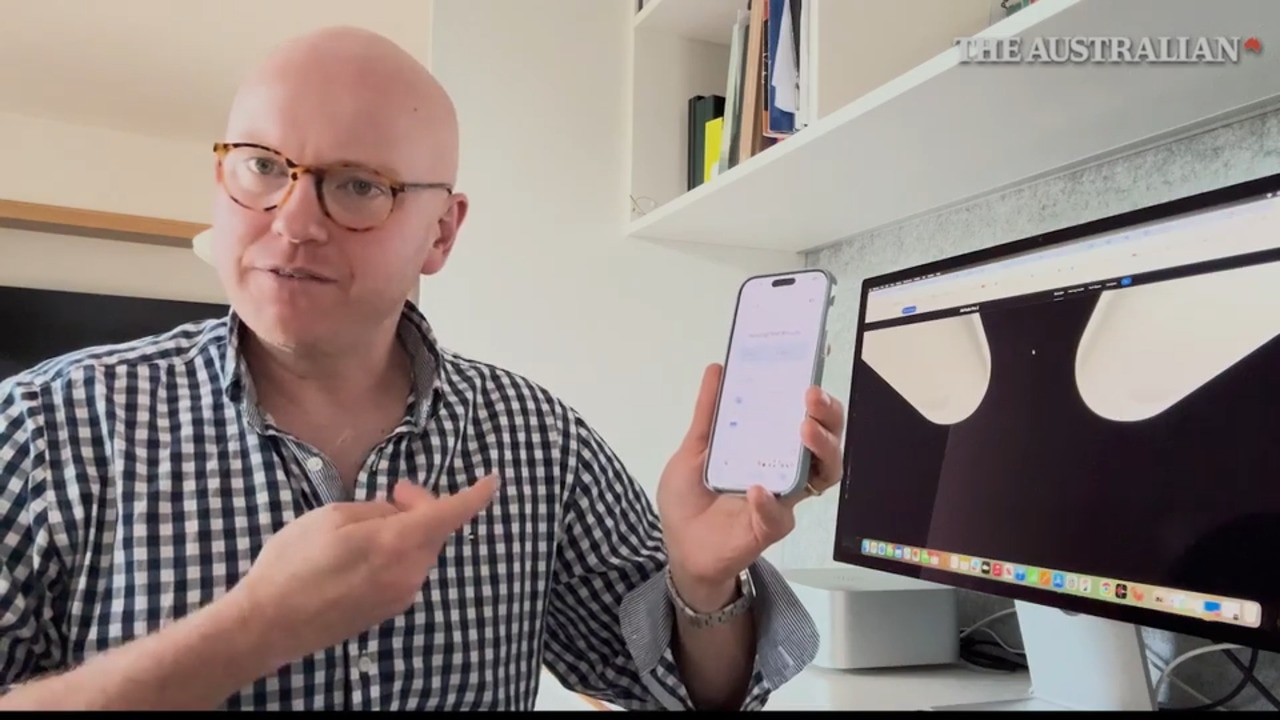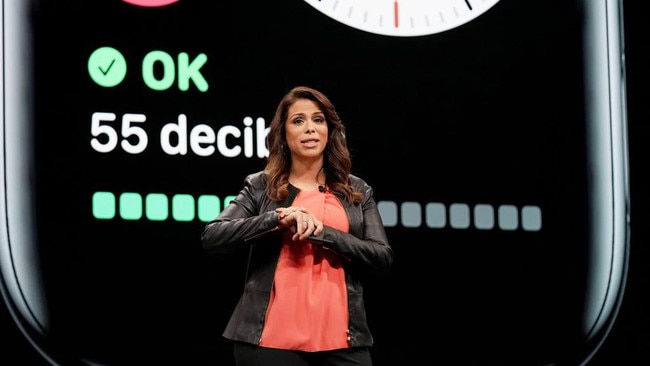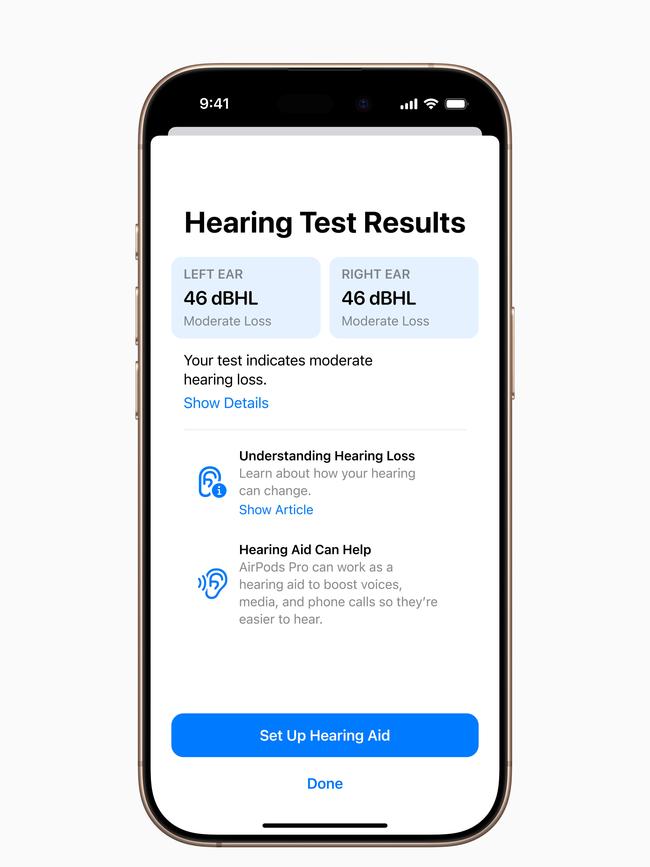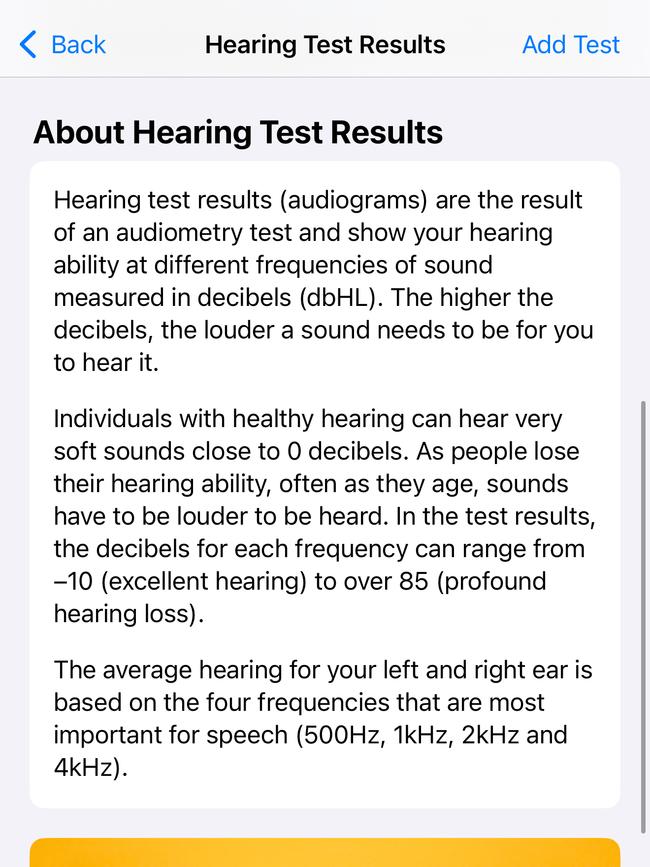How Apple’s new hearing test and AirPods ‘hearing aids’ stack up
I hadn’t had my hearing checked in 20 years, so was keen to give Apple’s new at-home test a go. The results were surprising. Here is what I found and what audiologists say.

In crowded, noisy venues I often find myself smiling and nodding instead of listening to a conversation. I’m not being rude. It’s just I can’t hear exactly what’s being said.
So when Apple released a software update last week that allowed people to perform a hearing test at home with a pair of AirPods Pro 2 earbuds and an iPhone or iPad, I was keen to give it a shot.
It has been about 20 years since I had a hearing test with an audiologist. The test was in a mobile booth in a van at Timboon in regional Victoria. The good news was back then I had no hearing loss.
And I haven’t been back since.
This is a mistake. Ear and Hearing Australia recommends adults aged 18-40 have a test every three to five years. And those aged 40-60 should have one every one to three years.
More troubling is that people who start feeling some type of loss don’t seek treatment for up to 10 years afterwards.
This is what Apple is hoping to change. When I sat down with Apple’s vice president of health, Sumbul Desai, she told me that the new hearing test did not aim to replace audiologists but create more awareness and encourage people to seek professional health treatment.
How accurate is the test?
The Therapeutic Goods Administration quietly approved the test in December. Apple says it is clinically validated and was developed using more than 150,000 “real world” audiograms and “millions of simulations”.
But it’s not perfect.

The challenge is finding a quiet space, like an audiologist’s booth. I sat down at a desk in regional Victoria where I had nothing but birdsong in the background – but even the occasional tweet was enough to distract my hearing in the test.
Apple aims to overcome such difficulties by playing the range of tones at different frequencies several times in case someone mishears.
How long does it take?
Apple says it can take about five minutes. If you take your time reading the instructions and screen prompts before the test, it can take about eight minutes, which is reasonably quick.
It starts by ensuring that the AirPods fit in your ear correctly, to create a seal. The left ear is tested first. Tones are played through the earbuds and you tap the screen when you hear them. When that is completed the right ear is tested and then you’re given a summary of your hearing.
Apple says this summary can be displayed in the Health app so a user can discuss it with a doctor or audiologist later.
The results?

I tested myself twice. Both displayed little to no loss, which was a relief. Apple says individuals with healthy hearing can hear very low sounds close to 0 decibels. According to my test, my left ear recorded -7, which was odd.
In another test it recorded 2dB. I tested again and recorded 3dB for my left ear. Apple says the quieter the room, the more accurate the test, and during the first test, there was a bit of birdsong in the background.
Regardless, I have readouts of all tests, so I can book time with audiologist to discuss my hearing health further.
What do audiologists say?

Devin McCaslin of the University of Michigan’s audiology program describes the test as a “helpful first step” for someone who suspects they might have hearing loss and needs treatment.
“In-person tests with an audiologist offer much more,” Dr McCaslin says.
“We have the ability to control the testing environment, use advanced diagnostic tools and assess more than just hearing sensitivity, like speech understanding and middle-ear function. Plus, we can tailor recommendations based on a person’s unique hearing profile and overall health.”
What about using AirPods as a hearing aid?
Dr McCaslin says a barrier to treatment, besides cost (hearing aids can cost thousands of dollars) is “the stigma” – people think hearing aids make them look old, unlike glasses which have become fashionable.
“But kids wear AirPods (which cost $399). My daughter and son wear them everywhere,” Dr McCaslin says.
“Therefore, the stigma isn’t really an issue, and the cost is quite reasonable, especially if you’re already purchasing them as headphones. Other hearing aid manufacturers have been working to connect their devices to different smartphone platforms, but Apple’s platform stands out for its seamless integration between its products.”

Apple is also aiming to prevent loss as well as enhance hearing. While the tips on the AirPods Pro 2 provide up to 10dB of passive noise reduction, the H2 chip helps to actively reduce louder noises 48,000 times a second.
What this means, according to a National Acoustic Laboratories (NAL) study, is AirPods Pro 2’s active noise cancellation function can reduce background sounds by up to 27dB on average. So it can reduce sounds in a noisy restaurant, which can be about 80dB, to the level of a normal conversation, which is about 60dB, for example.
NAL principal engineer Nicky Chong-White said reducing background noise has several benefits.
“It lowers the risk of noise-induced hearing loss by reducing the need to turn up the volume. Additionally, it enhances the clarity of calls and music, and it may even reduce stress related to exposure to loud noise,” she said.
Apple has also developed a conversation booster function, so people can wear their AirPods in noisy venues – like a crowded restaurant – to better hear speech. This is unlike conventional hearing aids, which amplify all sounds.
I have found myself wearing AirPods – playing no music – to access this function, which works well – even for healthy ears.




To join the conversation, please log in. Don't have an account? Register
Join the conversation, you are commenting as Logout